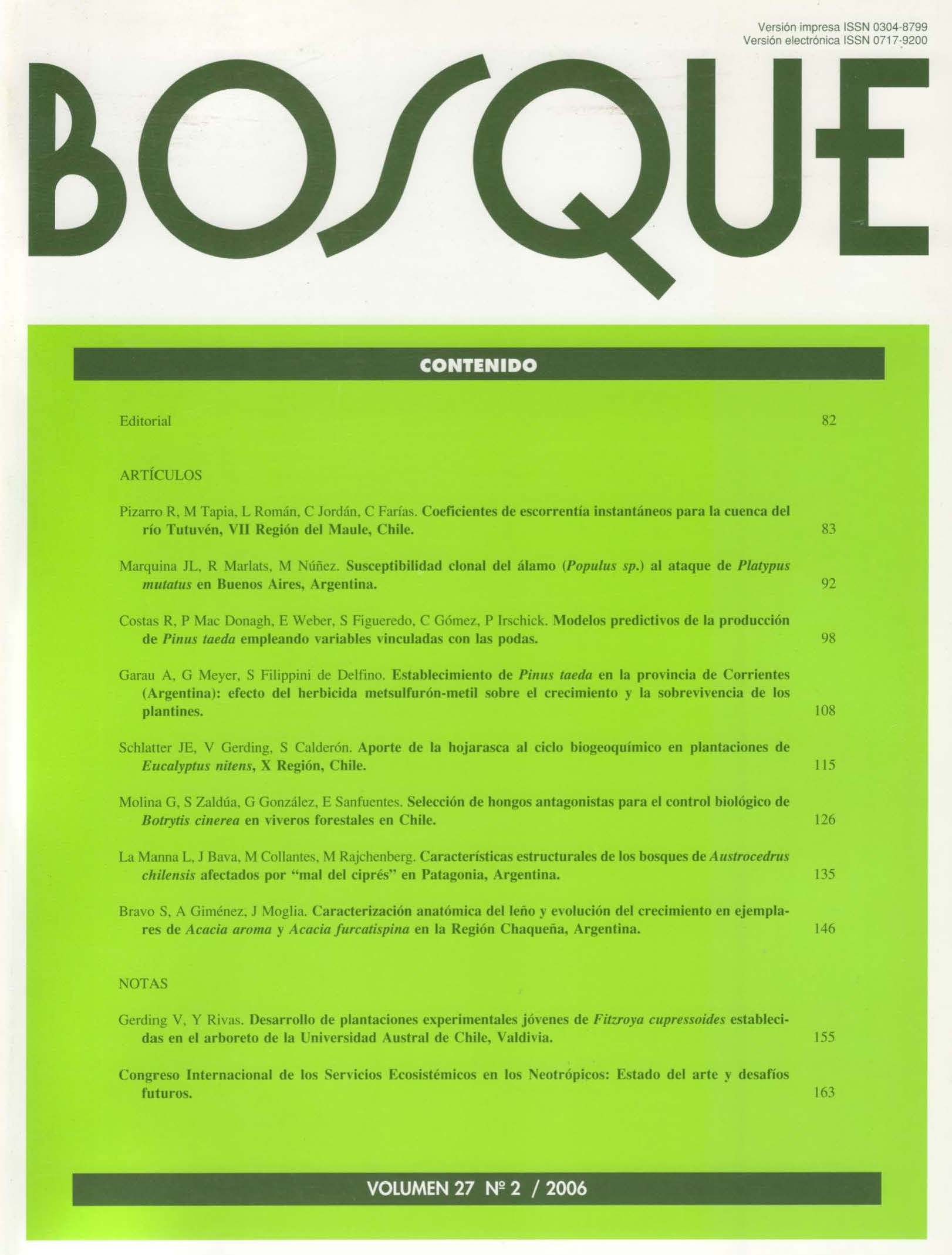Aporte de la hojarasca al ciclo biogeoquímico en plantaciones de Eucalyptus nitens, X Región, Chile
Contenido principal del artículo
Resumen
El presente trabajo evalúa el flujo de hojarasca en una plantación de Eucalyptus nitens establecida en un andisol (comuna de Fresia, X Región, Chile), en un área con diferentes tratamientos de fertilización, desde el cierre de copas hasta el inicio de la edad fustal (4-7 años de edad). Al cierre de copas se alcanzó la máxima caída de hojarasca (7-11 t ha–1), siendo menor en los años siguientes (5-6 t ha–1); la mayor proporción (45-60%) cayó en verano. Con esta biomasa regresaron al suelo 20-50 kg ha–1 año–1 de N, 1-4 de P, 5-40 de K y 31-151 de Ca, según edad y el tratamiento aplicado. En el mantillo se acumularon a los 7 años 6-10 t ha–1 de biomasa y la poda y el raleo (5-6 años) adicionaron similares cantidades (ramas y corteza). En el mantillo se acumularon 90-100 kg ha–1 de N, < 15 de P, 20-40 de K y 140-230 de Ca. Esta biomasa y nutrientes constituyen una reserva muy importante para el ecosistema y la sustentabilidad del cultivo.

